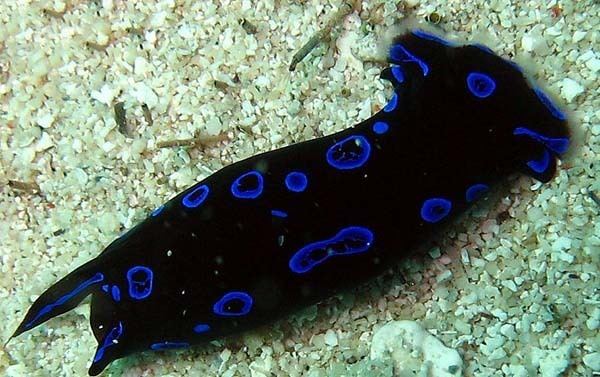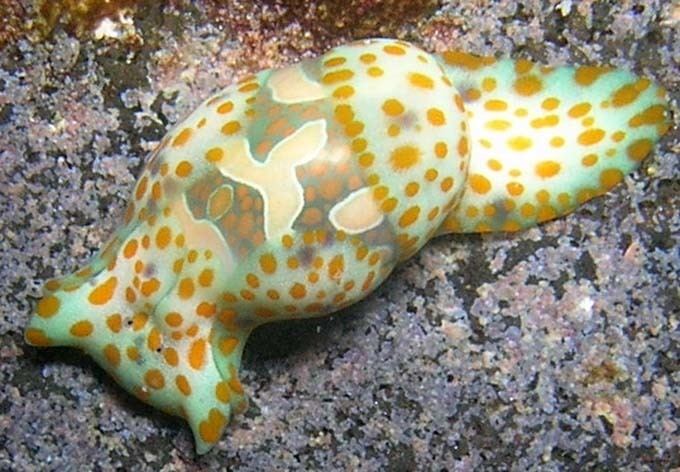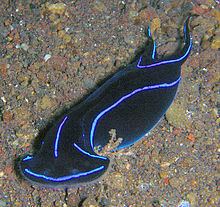Rank Order | ||
 | ||
Similar | ||
The clade Cephalaspidea, also known as the headshield slugs and bubble snails, is a major taxon of sea slugs and bubble snails, marine gastropod mollusks within the larger clade Euopisthobranchia. Bubble shells is another common name for these families of marine gastropods, some of which have thin bubble-like shells. This clade contains more than 600 species.
Contents
- Sea slug nudibranchs cephalaspidea onchidiidae
- Anatomy
- Life habits and related anatomical structures
- Taxonomy
- Linnaean taxonomy
- 2005 taxonomy
- 2009 taxonomy
- 2010 taxonomy
- 2015 taxonomy
- References

Members of this worldwide clade used to be considered the most primitive of the opisthobranchs, but now they are considered as derived and specialized members of the Euthyneura Spengel, 1881

Headshield slugs are the most morphologically diverse group of all the opisthobranchs.
Sea slug nudibranchs cephalaspidea onchidiidae
Anatomy

The vast majority possess a shell, although it may be reduced or internal. They have a well-developed headshield, a characteristic broadening at the head, which is used to plow beneath the surface of the sand. This headshield prevents the sand entering the mantle cavity. There is a muscular foot with or without parapodia (fleshy wing-like flaps).
Life habits and related anatomical structures

Headshield slugs often live just beneath the surface of the sand and can also be seen crawling on rocks. They have well-developed sensory structures to detect prey, which may be other opisthobranchs, polychaetes or bristleworms and foraminiferans. Several species are voracious carnivores.

Members of the brightly colored genus Chelidonura also have well-developed eyes on the anterior end of the head and bundles of sensory cilia around the mouth. With these cilia they are able to track their prey by following the victim’s mucous trail.
The Hancock's organ is a chemosensory organ situated between the foot and the headshield. It plays a role in olfactory and sensory detection. It is visible as a dark brown pit at the base of the right rhinophore.
Taxonomy
The taxonomy of the shelled cephalaspideans, the bubble snails, like that of many shelled mollusks, used to be based very simply on shell characteristics. But because there are some similarities in shell morphology throughout this group, more recently taxonomists have taken other anatomical characteristics into consideration, such as the radula, gizzard, penis, and Hancock’s organ.
In 2015 a new study based on molecular phylogenetics has changed significantly the taxonomy of the Caphalaspidea. The monophyly of the Cephalaspidea was confirmed, but the families Cylichnidae, Diaphanidae, Haminoeidae, Philinidae, and Retusidae were found non-monophyletic. This had led to the creation of new families ((Alacuppidae, Colinatydidae, Colpodaspididae, Mnestiidae, Philinorbidae) ) and one new genus (Alacuppa). Two family names (Acteocinidae, Laonidae) and two genera (Laona, Philinorbis) are reinstated as valid
Linnaean taxonomy
2005 taxonomy
In the taxonomy of Bouchet & Rocroi (2005), the clade Cephalaspidea is arranged as follows:
The superfamily Acteonoidea has been included into the new Informal Group "Lower Heterobranchia" and the superfamily Cylindrobulloidea becomes part of the Group Cylindrobullida.
2009 taxonomy
Malaquias et al. (2009) have rearranged taxonomy of Cephalaspidea sensu lato:
The taxonomy of Cephalaspidea sensu lato by Malaquias et al. (2009) is arranged as follows (there are listed genera under molecular analysis; not analyzed families are under "incertae sedis"):
Architectibranchia Haszprunar, 1985
Runcinacea Burn, 1963
Cephalaspidea Fischer, 1887 - This means Cephalaspidea sensu stricto
2010 taxonomy
Subsequently Malaquias (2010) moved Bullacta exarata (formerly the only member of Bullactidae) into the family Haminoeidae.
Jörger et al. (2010) moved Cephalaspidea sensu stricto and Runcinacea into the Euopisthobranchia and they confirmed the placement of Acteonoidea within the Lower Heterobranchia. All families of Architectibranchia were already within the Lower Heterobranchia in the taxonomy of Bouchet & Rocroi, except for the Notodiaphanidae, which has been placed in the Lower Heterobranchia since 2010, in order that the Architectibranchia can be considered to be monophyletic.
2015 taxonomy
The publication by Oskars T.R., Bouchet P. & Malaquias M.A. (2015). A new phylogeny of the Cephalaspidea (Gastropoda: Heterobranchia) based on expanded taxon sampling and gene markers. in the journal Molecular Phylogenetics and Evolution. 89 came to the following conclusion, with the creation of new families
The superfamily Bulloidea was not supported in the Bayesian phylogenetic hypothesis and Diaphanoidea was found polyphyletic. The superfamilies Haminoeoidea and Philinoidea were accepted. The composition of each of the superfamilies was drastically rearranged.
